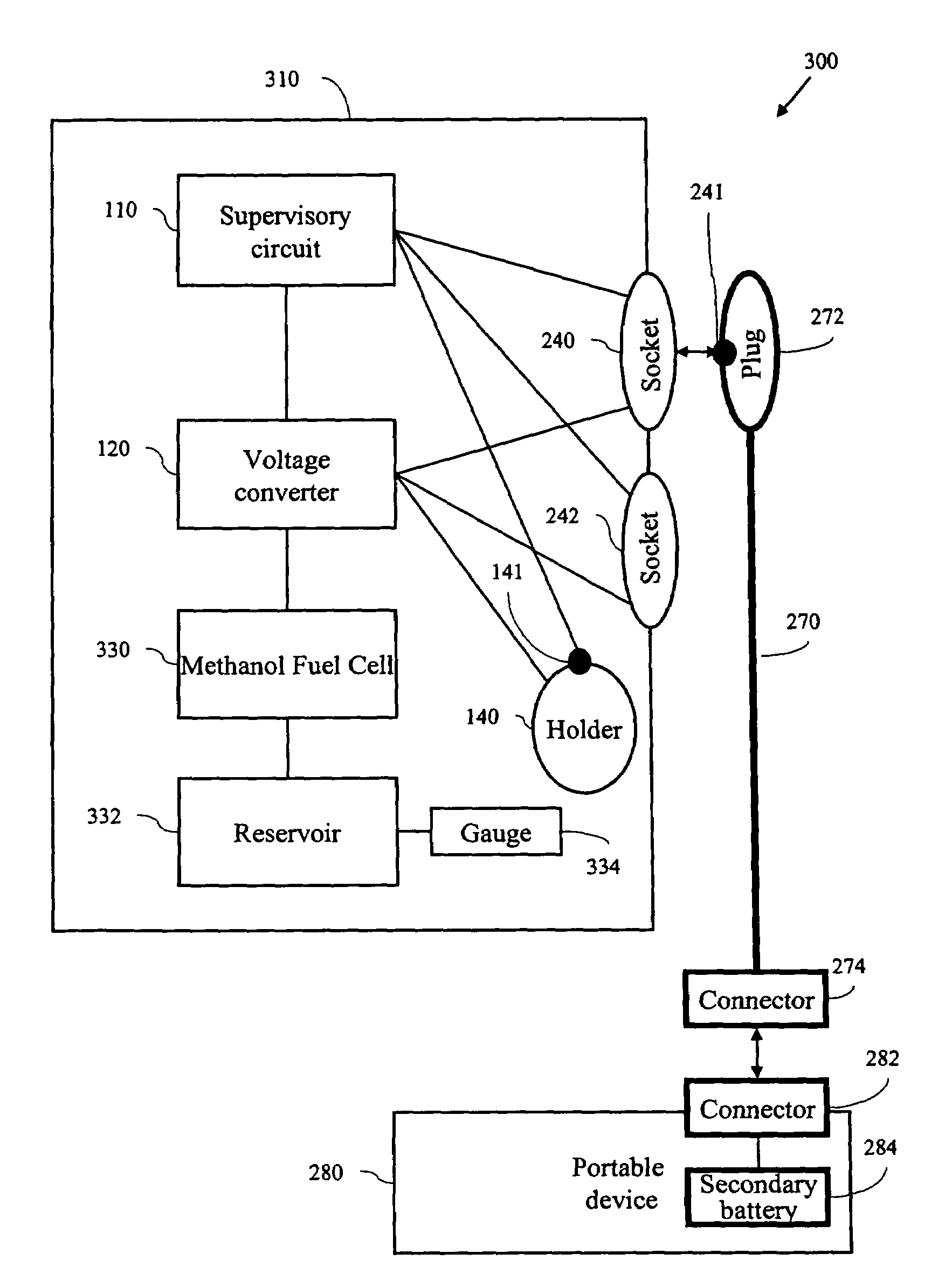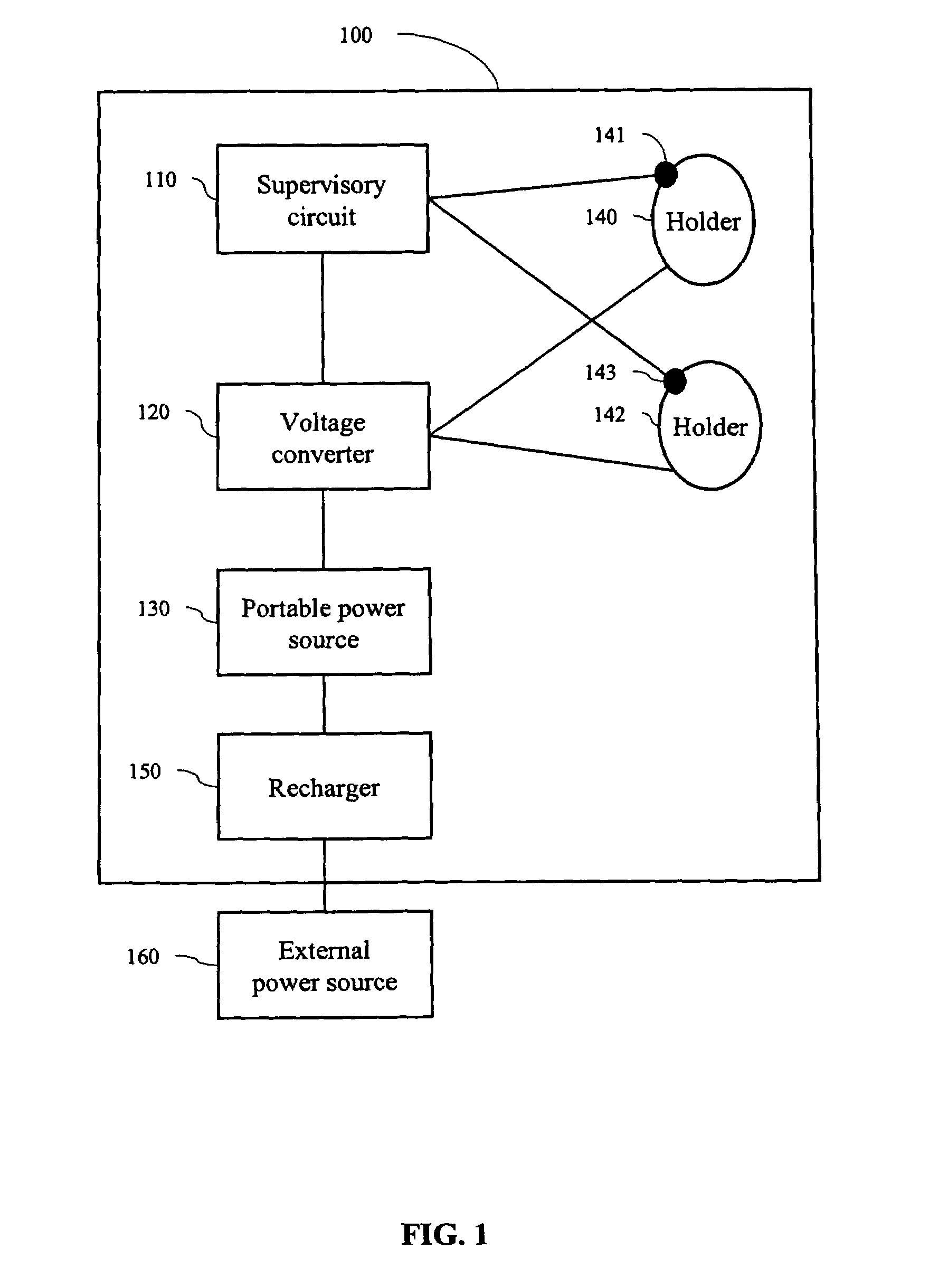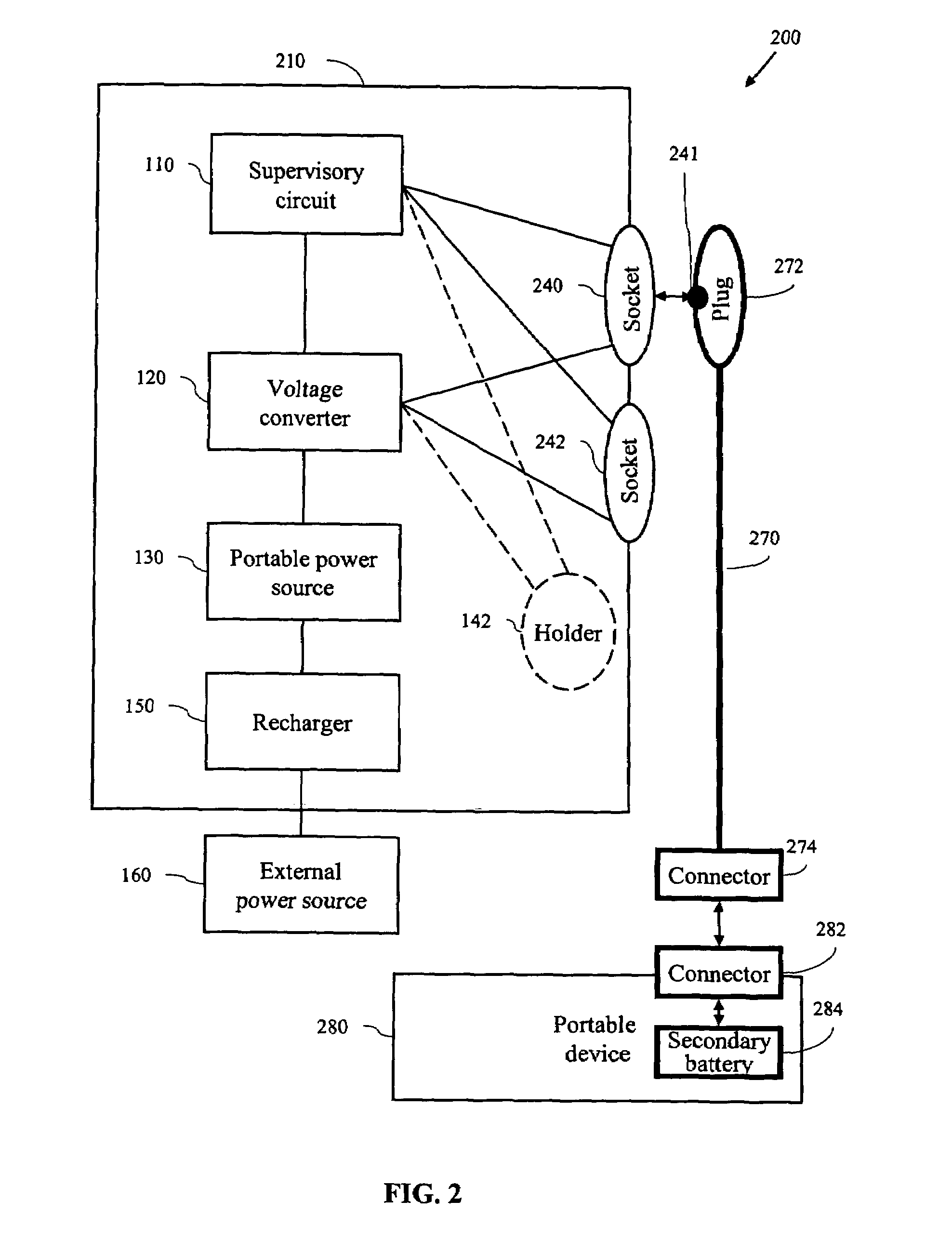Portable battery recharge station
a recharge station and portable technology, applied in the field of portable battery recharge stations, can solve the problems of endangering himself, affecting the quality of affecting the quality of the battery life of the news crew,
- Summary
- Abstract
- Description
- Claims
- Application Information
AI Technical Summary
Benefits of technology
Problems solved by technology
Method used
Image
Examples
Embodiment Construction
[0027]FIG. 1 is a schematic diagram illustrating an embodiment of the present invention comprising a portable battery recharge station having a plurality of holders.
[0028]Portable battery recharge station 100 comprises supervisory circuit 110, voltage converter 120, portable power source 130, holders 140 and 142, and optionally recharger 150. Although for the purposes of illustration, FIG. 1 shows two holders 140 and 142, portable battery recharge station 100 could comprise only one holder, and preferably comprises two, three, four or more holders.
[0029]Each of holders 140 and 142 can be adapted to receive a specific type of secondary battery of a portable device. In other words, holder 140 can be adapted to receive a first type of secondary battery and holder 142 can be adapted to receive a second type of secondary battery. Types of secondary batteries that may be placed in holders 140 and 142 include NiCd, NiH2, NiMH, Li-ion, Li-polymer, zinc-air, and lead acid batteries. Preferab...
PUM
| Property | Measurement | Unit |
|---|---|---|
| voltage | aaaaa | aaaaa |
| voltage | aaaaa | aaaaa |
| voltage | aaaaa | aaaaa |
Abstract
Description
Claims
Application Information
 Login to View More
Login to View More - R&D
- Intellectual Property
- Life Sciences
- Materials
- Tech Scout
- Unparalleled Data Quality
- Higher Quality Content
- 60% Fewer Hallucinations
Browse by: Latest US Patents, China's latest patents, Technical Efficacy Thesaurus, Application Domain, Technology Topic, Popular Technical Reports.
© 2025 PatSnap. All rights reserved.Legal|Privacy policy|Modern Slavery Act Transparency Statement|Sitemap|About US| Contact US: help@patsnap.com



